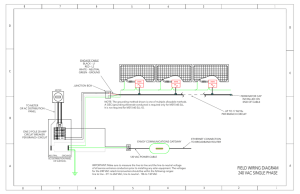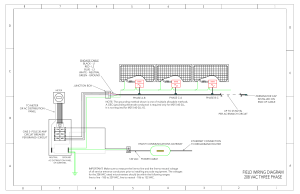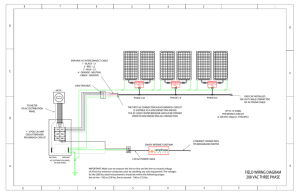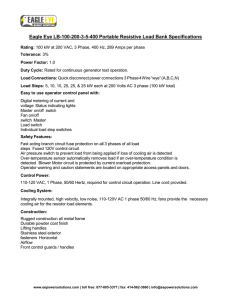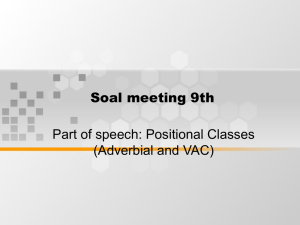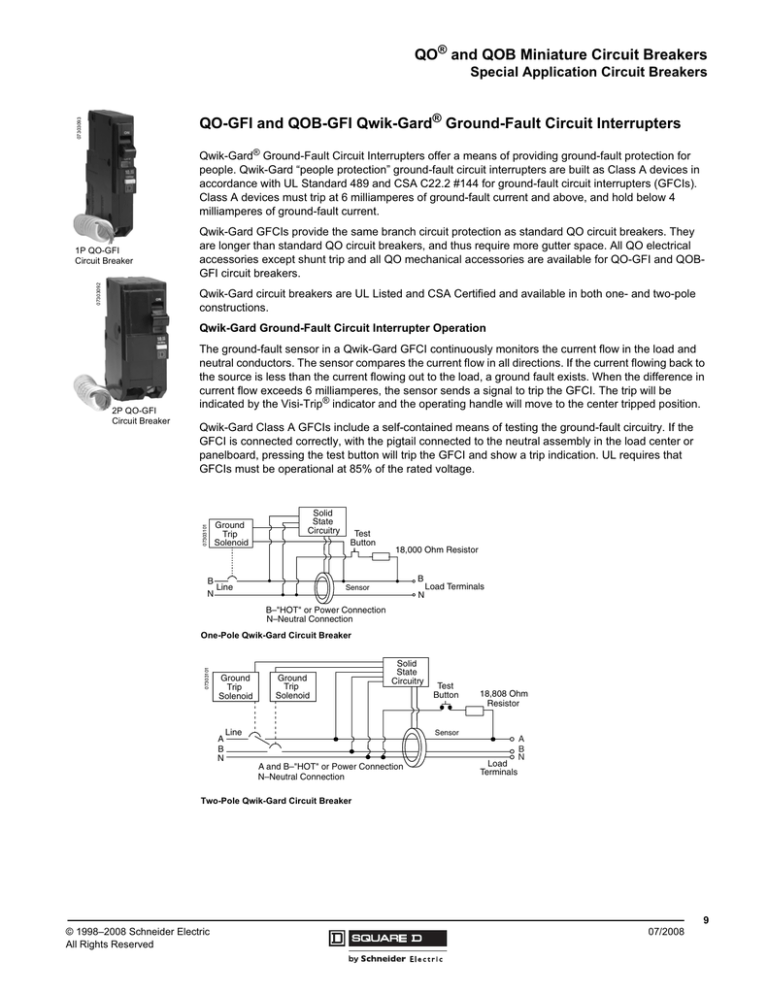
QO® and QOB Miniature Circuit Breakers
Special Application Circuit Breakers
07303093
QO-GFI and QOB-GFI Qwik-Gard® Ground-Fault Circuit Interrupters
Qwik-Gard® Ground-Fault Circuit Interrupters offer a means of providing ground-fault protection for
people. Qwik-Gard “people protection” ground-fault circuit interrupters are built as Class A devices in
accordance with UL Standard 489 and CSA C22.2 #144 for ground-fault circuit interrupters (GFCIs).
Class A devices must trip at 6 milliamperes of ground-fault current and above, and hold below 4
milliamperes of ground-fault current.
07303092
1P QO-GFI
Circuit Breaker
Qwik-Gard GFCIs provide the same branch circuit protection as standard QO circuit breakers. They
are longer than standard QO circuit breakers, and thus require more gutter space. All QO electrical
accessories except shunt trip and all QO mechanical accessories are available for QO-GFI and QOBGFI circuit breakers.
Qwik-Gard circuit breakers are UL Listed and CSA Certified and available in both one- and two-pole
constructions.
Qwik-Gard Ground-Fault Circuit Interrupter Operation
Qwik-Gard Class A GFCIs include a self-contained means of testing the ground-fault circuitry. If the
GFCI is connected correctly, with the pigtail connected to the neutral assembly in the load center or
panelboard, pressing the test button will trip the GFCI and show a trip indication. UL requires that
GFCIs must be operational at 85% of the rated voltage.
07303101
2P QO-GFI
Circuit Breaker
The ground-fault sensor in a Qwik-Gard GFCI continuously monitors the current flow in the load and
neutral conductors. The sensor compares the current flow in all directions. If the current flowing back to
the source is less than the current flowing out to the load, a ground fault exists. When the difference in
current flow exceeds 6 milliamperes, the sensor sends a signal to trip the GFCI. The trip will be
indicated by the Visi-Trip® indicator and the operating handle will move to the center tripped position.
Ground
Trip
Solenoid
Solid
State
Circuitry
Test
Button
18,000 Ohm Resistor
B
B
Line
N
Sensor
Load Terminals
N
B–"HOT" or Power Connection
N–Neutral Connection
07303101
One-Pole Qwik-Gard Circuit Breaker
Ground
Trip
Solenoid
A
B
N
Ground
Trip
Solenoid
Solid
State
Circuitry
Line
Test
Button
18,808 Ohm
Resistor
Sensor
A and B–"HOT" or Power Connection
N–Neutral Connection
Load
Terminals
A
B
N
Two-Pole Qwik-Gard Circuit Breaker
9
© 1998–2008 Schneider Electric
All Rights Reserved
07/2008
QO® and QOB Miniature Circuit Breakers
Special Application Circuit Breakers
Proper Application of Qwik-Gard GFCIs
•
Do not connect to swimming pool equipment installed before adoption of the 1965 National Electric
Code
•
Do not connect to electrical ranges or clothes dryers whose frames are grounded by a connection
to the grounded circuit conductor.
•
Do not use as a main circuit breaker in a panelboard or in reverse connected (backfed)
applications.
•
Do not megger, high-voltage or hi-pot test. Any voltage in excess of 240 Vac will damage the GFCI
electronics so that the circuit breaker will not protect against low-level ground faults.
•
•
Must be located no more than 250 ft. (76 m) from the load being served.
RequiresS the same mounting space as standard QO circuit breakers.
One-Pole Qwik-Gard Ground-Fault Circuit Interrupters
One-pole Qwik-Gard GFCIs must be installed on independent circuits. Circuits which have a neutral
common to more than one panel circuit conductor cannot be protected against ground faults by a onepole GFCI because the current returning to the source through the neutral cannot be effectively split to
prevent the Qwik-Gard GFCI from tripping under normal use.
Figure 2:
Typical One-Pole Qwik-Gard GFCI Wiring
120/240 Vac Source
A
B
07303106
N
Hot
Duplex
Receptacle
120 V
120 V
240 V
S/N
GND
One-Pole
Circuit
Breaker
with
GFCI or EPD
120 V
Neutral
Equipment Ground
10
07/2008
© 1998–2008 Schneider Electric
All Rights Reserved
QO® and QOB Miniature Circuit Breakers
Special Application Circuit Breakers
Two-Pole Qwik-Gard GFCIs
Two-pole Qwik-Gard GFCIs can be installed on a 120/240 Vac 1Ø3W system, the 120/240 Vac portion
of a 120/240 Vac 3Ø4W system, or two phases and neutral of a 208Y/120 Vac 3Ø4W system.
Regardless of the application, connections must be made to two “hot” busses and the panel neutral
assembly. When installed on these systems, protection is provided for two-wire 240 Vac or 208 Vac
circuit, three-wire 120/240 Vac or 208Y/120 Vac circuits and 120 Vac multiwire circuits.
The 60 A QO260GFI and QOB260GFI GFCIs are limited for use on 208 Vac and 240 Vac two-wire
systems. These GFCIs require the panel neutral connection to provide the 120 Vac power necessary
for testing the ground-fault circuitry.
Figure 3:
Typical Two-Pole Qwik-Gard GFCI Wiring
120/208 Vac or
120/240 Vac Source
A
B
N
120/240 Vac Source
120 V
Neutral
120 V
240 V
A
B
07303103
07303104
N
Hot B
Hot A
Hot B
250 V Duplex
Receptacle
120 V
Two-Pole
Circuit Breaker
with
GFCI or EPD
120 V
Load
240 V
Two-Pole
Circuit Breaker
with
GFCI or EPD
240 V
S/N
Equipment Ground
GND
S/N
07303105
Three-Wire 120/240 Vac or 208Y/120 Vac Circuits
15–50 A Only
120/208 Vac or
120/240 Vac Source
N
B
A
GND
Hot A
Equipment Ground
Two-Wire 240 Vac or 208 Vac
Hot B
120 V
120 V
240 V
Two-Pole
Circuit Breaker
with
GFCI or EPD
120 V
Neutral
Duplex
Receptacle
Duplex
Receptacle
S/N
120 V
GND
Hot A
Equipment Ground
120 Vac Multiwire Circuits
15–50 A Only
11
© 1998–2008 Schneider Electric
All Rights Reserved
07/2008

